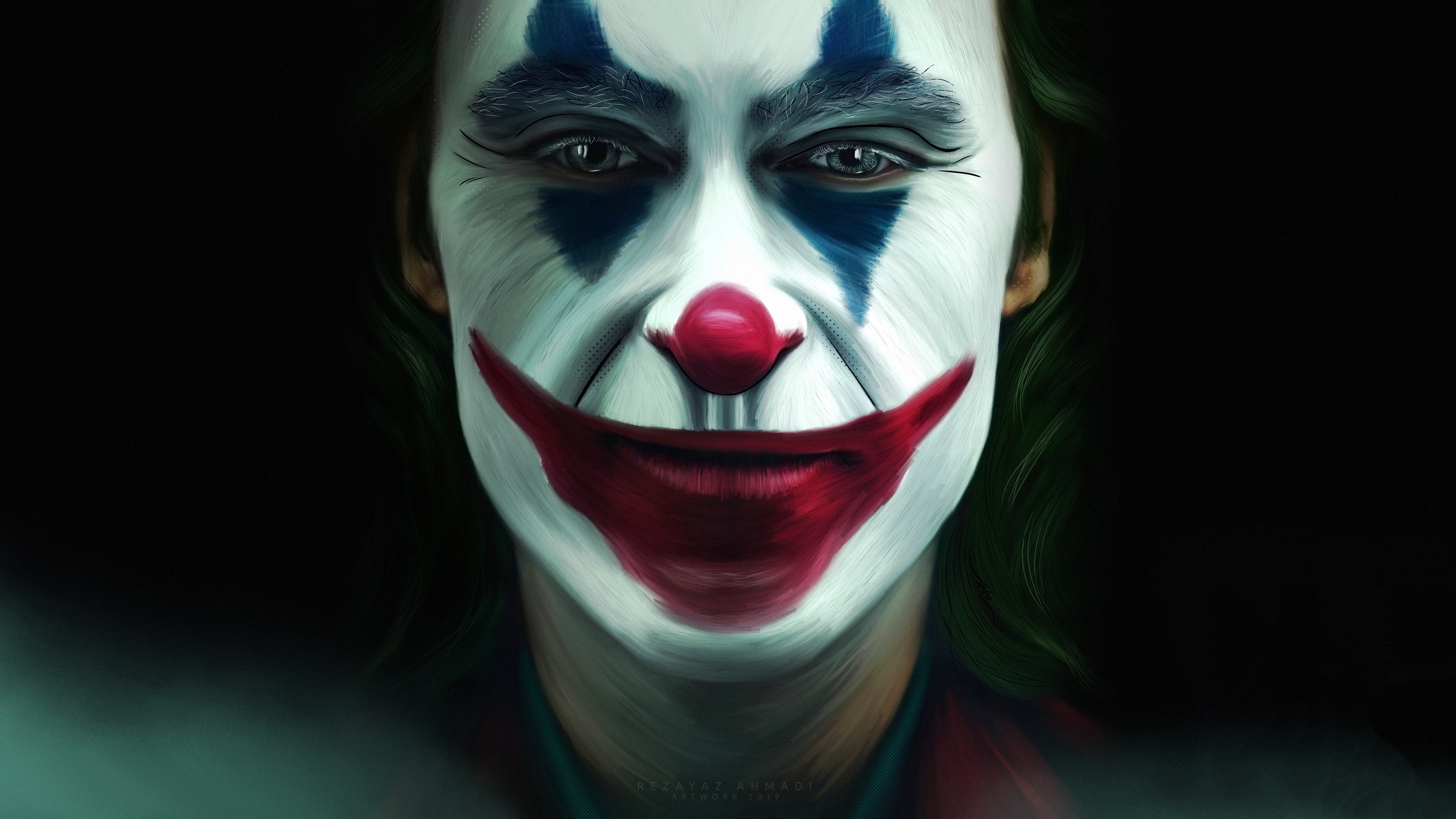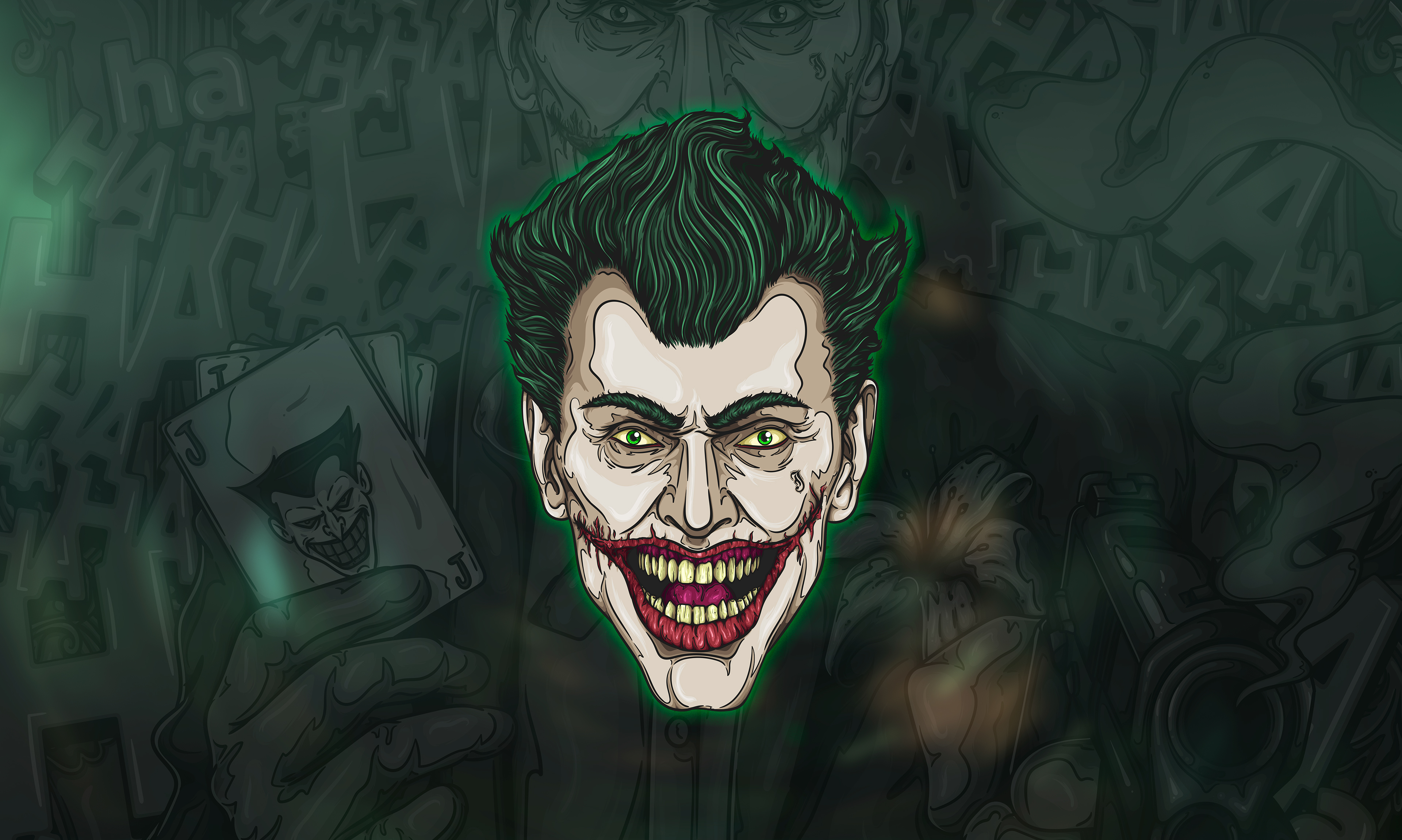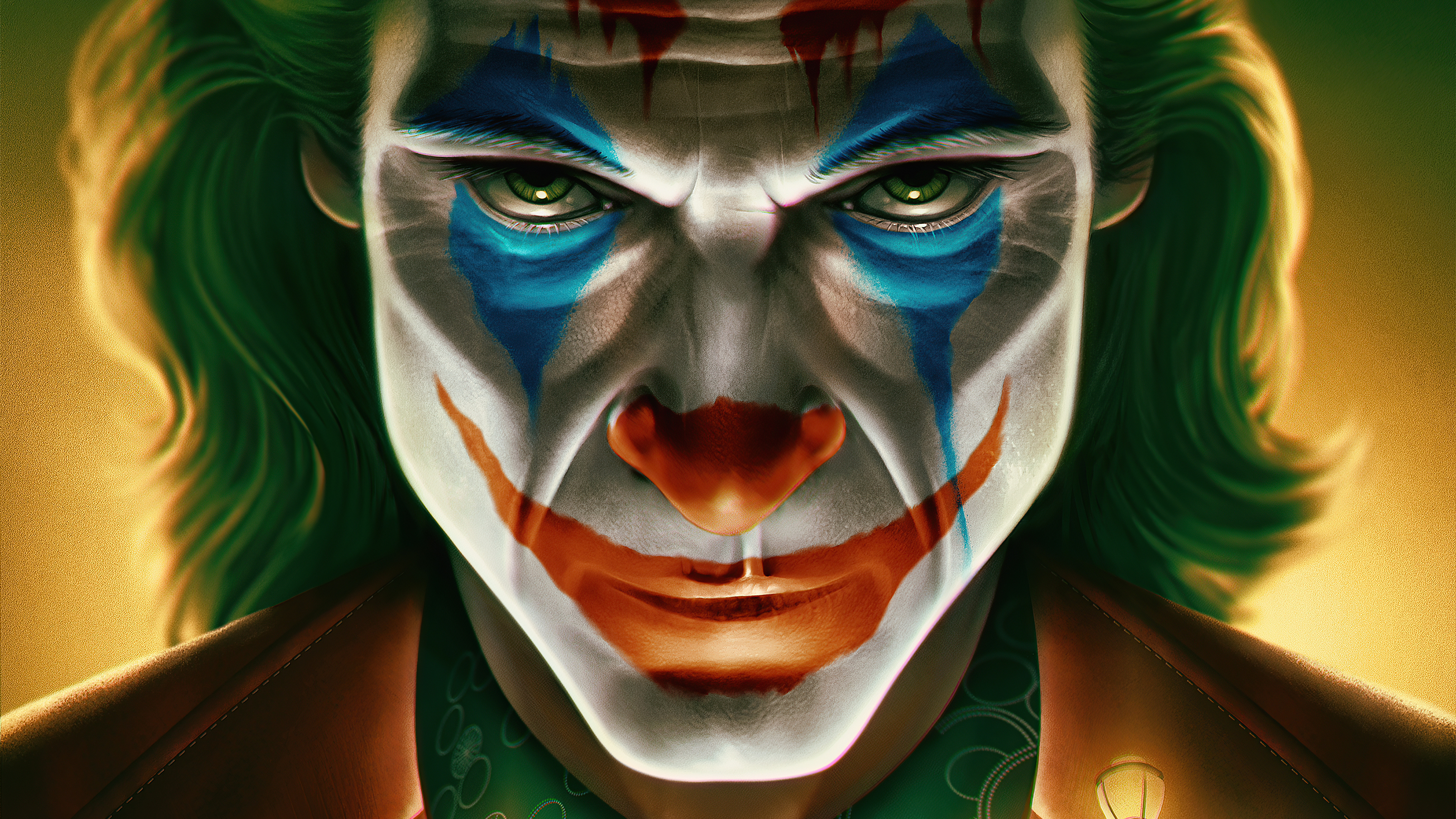Joker Face
Have you ever wondered about the enigmatic "joker face"? Its significance extends far beyond a mere expression.
The "joker face" is a distinctive facial expression characterized by a wide, exaggerated grin, often accompanied by narrowed eyes and a mischievous or unsettling demeanor. It has become a cultural phenomenon, frequently associated with tricksters, villains, and individuals with a flair for the unpredictable.
The "joker face" holds historical roots in theater and performance. Jesters and clowns have employed it for centuries to entertain and provoke audiences. In modern times, it has permeated popular culture, finding expression in art, literature, film, and beyond. Its versatility allows it to convey a range of emotions, from amusement and mischief to cunning and malevolence.
The "joker face" has significant psychological implications. Studies suggest that it can be an indicator of underlying personality traits such as impulsivity, sensation-seeking, and even psychopathy. However, it is essential to note that the presence of a "joker face" alone does not definitively diagnose any condition.
In everyday interactions, the "joker face" can serve as a social signal. It can communicate humor, sarcasm, or a desire to deflect attention. It can also be a defense mechanism, employed to mask true emotions or intentions.
The "joker face" is a multifaceted phenomenon with a rich history and diverse interpretations. Whether encountered in art, performance, or everyday life, it invites us to explore the complexities of human nature and the power of facial expressions.
- Trn H Linh L Link
- Sean Evans Height
- Toby Keiths Car Collection
- Vin Diesel Gal Gadot
- When Is Lil Boosies Birthday
Joker Face
The "joker face" is a distinctive facial expression that has captured the imagination of artists, performers, and psychologists alike. Its key aspects encompass various dimensions, including:
- Exaggerated grin
- Narrowed eyes
- Mischievous demeanor
- Unpredictability
- Villainous associations
- Psychological implications
- Social signaling
- Cultural phenomenon
The "joker face" can be seen as a reflection of our own hidden desires and fears. It is a reminder that even the most ordinary among us have the potential for both good and evil. The "joker face" is a powerful symbol that can be interpreted in many different ways, and it continues to fascinate us today.
1. Exaggerated grin
An exaggerated grin is a key component of the "joker face." It is a wide, exaggerated smile that often extends beyond the natural limits of the mouth. This grin can be genuine or forced, and it can convey a range of emotions, from amusement and mischief to cunning and malevolence.
In the context of the "joker face," an exaggerated grin is often used to create a sense of unease or discomfort. It can be a sign that the joker is not to be trusted, or that they are about to do something unpredictable. This grin can also be used to mask true emotions, such as sadness or anger.
In real life, exaggerated grins can be seen in people who are trying to be funny or charming. However, they can also be a sign of underlying psychological issues, such as psychopathy or schizophrenia. It is important to be aware of the different contexts in which exaggerated grins can be used, and to interpret them accordingly.
Understanding the connection between exaggerated grins and the "joker face" can help us to better understand the intentions of others. It can also help us to be more aware of our own facial expressions, and how they might be perceived by others.
2. Narrowed eyes
In the context of the "joker face," narrowed eyes are often used to create a sense of unease or discomfort. They can be a sign that the joker is not to be trusted, or that they are about to do something unpredictable. This narrowing of the eyes can also be used to mask true emotions, such as sadness or anger.
In real life, narrowed eyes can be a sign of suspicion, distrust, or hostility. They can also be a sign of concentration or focus. It is important to be aware of the different contexts in which narrowed eyes can be used, and to interpret them accordingly.
Understanding the connection between narrowed eyes and the "joker face" can help us to better understand the intentions of others. It can also help us to be more aware of our own facial expressions, and how they might be perceived by others.
3. Mischievous demeanor
The mischievous demeanor is a key aspect of the "joker face." It is a playful, impish attitude that often suggests a willingness to break the rules or engage in risky behavior. This demeanor can be charming and entertaining, but it can also be unsettling or even threatening.
- Playfulness
Playfulness is a key component of the mischievous demeanor. The joker is often seen as a trickster or a prankster, and their mischievous behavior is often playful in nature. This playfulness can be endearing, but it can also be disruptive or even harmful.
- Impishness
Impishness is another key component of the mischievous demeanor. The joker is often seen as a mischievous imp or goblin, and their behavior is often characterized by a mischievous sense of humor. This impishness can be charming, but it can also be annoying or even cruel.
- Risk-taking
The joker is often willing to take risks, even when the odds are against them. This risk-taking behavior can be exciting and thrilling, but it can also be dangerous or even reckless.
- Unpredictability
The joker is often unpredictable, and their behavior can be difficult to anticipate. This unpredictability can be unsettling or even frightening, but it can also be exciting or even liberating.
The mischievous demeanor is a complex and multifaceted phenomenon. It can be seen as a reflection of our own hidden desires and fears. The joker is a reminder that even the most ordinary among us have the potential for both good and evil. The mischievous demeanor is a powerful force that can be used for both good and evil, and it is important to be aware of its potential dangers.
4. Unpredictability
Unpredictability is a key component of the "joker face." The joker is often seen as a wild card, someone who cannot be trusted or relied upon. This unpredictability can be unsettling or even frightening, but it can also be exciting or even liberating.
In real life, unpredictable people can be difficult to deal with. We never know what they are going to do or say, and this can make it difficult to build relationships with them. However, unpredictable people can also be very interesting and exciting to be around. They can bring a sense of spontaneity and adventure to our lives.
The unpredictability of the "joker face" is a reminder that even the most ordinary among us have the potential for both good and evil. The joker is a symbol of our own hidden desires and fears. We all have the potential to be unpredictable, and it is important to be aware of this.
Understanding the connection between unpredictability and the "joker face" can help us to better understand ourselves and others. It can also help us to be more tolerant of unpredictable people and to see the potential for good in everyone.
5. Villainous associations
The "joker face" has strong associations with villains, both in fiction and in real life. This is due to the fact that the "joker face" is often used to convey a sense of menace or evil. The wide, exaggerated grin can be seen as a sign of madness or cruelty, while the narrowed eyes can suggest a lack of empathy or compassion.
In real life, people who have been described as having a "joker face" often have a history of violence or criminal behavior. For example, the serial killer John Wayne Gacy was known for his clown-like appearance and his habit of wearing a "joker face" mask. Similarly, the Joker character in the Batman comics and films is a notorious villain who is known for his sadistic and unpredictable behavior.
The connection between the "joker face" and villainy is a complex one. It is likely that the "joker face" is seen as a symbol of evil because it is a reminder of our own capacity for violence and cruelty. The "joker face" is a reminder that even the most ordinary among us have the potential for great evil.
Understanding the connection between the "joker face" and villainy can help us to be more aware of the dangers of unchecked aggression and violence. It can also help us to be more compassionate towards those who have been victims of violence or crime.
6. Psychological implications
The "joker face" has a number of psychological implications. It can be a sign of underlying personality traits, such as impulsivity, sensation-seeking, and even psychopathy. However, it is important to note that the presence of a "joker face" alone does not definitively diagnose any condition.
- Impulsivity
Impulsivity is a personality trait characterized by a tendency to act without thinking. People who are impulsive often have difficulty controlling their impulses, and they may engage in risky or dangerous behavior without considering the consequences. The "joker face" can be a sign of impulsivity, as it suggests a lack of control over facial expressions and emotions.
- Sensation-seeking
Sensation-seeking is a personality trait characterized by a need for excitement and stimulation. People who are sensation-seekers often engage in risky or dangerous behavior in order to experience new and intense sensations. The "joker face" can be a sign of sensation-seeking, as it suggests a desire to stand out from the crowd and to experience new and exciting things.
- Psychopathy
Psychopathy is a personality disorder characterized by a lack of empathy and remorse. People with psychopathy are often manipulative, deceitful, and aggressive. The "joker face" can be a sign of psychopathy, as it suggests a lack of empathy and compassion for others.
- Defense mechanism
The "joker face" can also be used as a defense mechanism. It can be a way to mask true emotions, such as sadness or anger. People who use the "joker face" as a defense mechanism may be trying to protect themselves from being hurt or rejected.
The psychological implications of the "joker face" are complex and varied. It is important to remember that the presence of a "joker face" alone does not definitively diagnose any condition. However, it can be a sign of underlying personality traits or psychological issues. If you are concerned about your own or someone else's mental health, it is important to seek professional help.
7. Social signaling
The "joker face" is a powerful social signal. It can be used to communicate a variety of messages, including: humor, sarcasm, or a desire to deflect attention. It can also be used as a defense mechanism, employed to mask true emotions or intentions.
In everyday interactions, the "joker face" can be used to create a sense of rapport or to put others at ease. It can also be used to deflect criticism or to avoid conflict. However, it is important to be aware of the potential consequences of using the "joker face." If it is used too often or in inappropriate contexts, it can be perceived as disingenuous or even manipulative.
Understanding the connection between the "joker face" and social signaling can help us to better understand the intentions of others. It can also help us to be more aware of our own facial expressions and how they might be perceived by others.
Here are some examples of how the "joker face" can be used as a social signal:
- A comedian might use the "joker face" to get a laugh from an audience.
- A politician might use the "joker face" to deflect a difficult question.
- A student might use the "joker face" to avoid being called on in class.
- A salesperson might use the "joker face" to build rapport with a customer.
The "joker face" is a versatile social signal that can be used to communicate a variety of messages. However, it is important to be aware of the potential consequences of using the "joker face." If it is used too often or in inappropriate contexts, it can be perceived as disingenuous or even manipulative.
8. Cultural phenomenon
The "joker face" has become a cultural phenomenon, transcending its origins in theater and performance to permeate various aspects of popular culture. Its enduring appeal can be attributed to its versatility and ability to evoke a wide range of emotions and associations.
As a cultural phenomenon, the "joker face" has been embraced by artists, entertainers, and the general public alike. It has been featured in countless works of art, literature, film, and television. The "joker face" has also become a popular costume and makeup choice for Halloween and other festive occasions.
The cultural significance of the "joker face" lies in its ability to represent a diverse array of concepts and emotions. It can symbolize chaos, unpredictability, or madness. It can also represent humor, mischief, or rebellion. The "joker face" has become a powerful symbol that can be interpreted in many different ways.
Understanding the connection between the "joker face" and cultural phenomenon is important for several reasons. First, it helps us to appreciate the multifaceted nature of the "joker face." Second, it allows us to better understand the role that cultural factors play in shaping our perceptions of the "joker face." Finally, it can help us to be more aware of the ways in which the "joker face" is used in popular culture.
Frequently Asked Questions about the "Joker Face"
The "joker face" is a complex and multifaceted phenomenon. It can be seen as a reflection of our own hidden desires and fears. The "joker face" is a reminder that even the most ordinary among us have the potential for both good and evil.
Here are some frequently asked questions about the "joker face":
Question 1: What is the "joker face"?
The "joker face" is a distinctive facial expression characterized by a wide, exaggerated grin, often accompanied by narrowed eyes and a mischievous or unsettling demeanor.
Question 2: What are the psychological implications of the "joker face"?
The "joker face" has been linked to a number of psychological traits, including impulsivity, sensation-seeking, and even psychopathy. However, it is important to note that the presence of a "joker face" alone does not definitively diagnose any condition.
Question 3: How is the "joker face" used in social interactions?
The "joker face" can be used to communicate a variety of messages in social interactions. It can be used to convey humor, sarcasm, or a desire to deflect attention. It can also be used as a defense mechanism, employed to mask true emotions or intentions.
Question 4: What is the cultural significance of the "joker face"?
The "joker face" has become a cultural phenomenon, transcending its origins in theater and performance to permeate various aspects of popular culture. Its enduring appeal can be attributed to its versatility and ability to evoke a wide range of emotions and associations.
Question 5: How can I better understand the "joker face"?
There are a number of ways to better understand the "joker face." One way is to study its history and origins. Another way is to observe how the "joker face" is used in different contexts, both in real life and in popular culture. Finally, it is important to be aware of your own reactions to the "joker face" and to reflect on what it might mean to you.
The "joker face" is a complex and fascinating phenomenon. By understanding its psychological, social, and cultural implications, we can gain a deeper understanding of ourselves and the world around us.
Transition to the next article section...
Conclusion
The "joker face" is a complex and multifaceted phenomenon that has captured the imagination of artists, performers, and psychologists alike. Its key aspects encompass various dimensions, including exaggerated grin, narrowed eyes, mischievous demeanor, unpredictability, villainous associations, psychological implications, social signaling, and cultural significance.
The "joker face" can be seen as a reflection of our own hidden desires and fears. It is a reminder that even the most ordinary among us have the potential for both good and evil. Understanding the "joker face" can help us to better understand ourselves and others. It can also help us to be more aware of the dangers of unchecked aggression and violence, and to be more compassionate towards those who have been victims of violence or crime.
- Why Did The Little Couple Get Divorced
- Simone Biles Pregnancy
- Fritz American Pickers
- Mexican Actors
- Waylon Jennings Children

Joker Face Makeup Wallpaper,HD Superheroes Wallpapers,4k Wallpapers

Joker Face Art Wallpaper,HD Superheroes Wallpapers,4k Wallpapers,Images

3840x2160 4k Joker Face Closeup 4K ,HD 4k Wallpapers,Images,Backgrounds